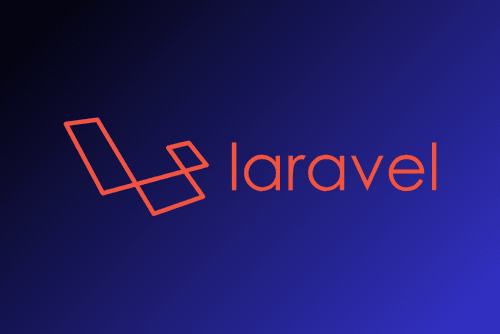Laravel Development: Mastering the Art of Modern Web Applications
Unlock the Power of PHP's Most Elegant Framework with Expert Guidance

Key Takeaways
- Laravel follows the MVC architecture for clean, maintainable code
- Eloquent ORM simplifies database operations and relationships
- Blade templating engine enables powerful, reusable views
- Artisan CLI boosts productivity with code generation and task automation
- Laravel excels in authentication, API development, and testing
- Scalability and performance optimization are crucial for large applications
- Continuous learning is essential due to frequent framework updates
As a seasoned Laravel expert with years of hands-on experience, I've navigated the intricacies of this powerful PHP framework to deliver robust, scalable web applications. Let's dive into the world of Laravel development and explore why it's the go-to choice for modern web projects.
Understanding the Laravel Framework
Laravel is more than just a PHP framework; it's a comprehensive ecosystem that empowers developers to create elegant, efficient web applications. At its core, Laravel embraces the Model-View-Controller (MVC) architecture, providing a solid foundation for organizing your code.
In my years of working with Laravel, I've seen firsthand how its structure accelerates development while maintaining code clarity. Here's a quick breakdown of the MVC components:
- Models: Represent your data and business logic
- Views: Handle the presentation layer, often using Blade templating
- Controllers: Process user input and manage application flow
This separation of concerns not only makes your code more maintainable but also allows for easier collaboration among team members.
Routing: The Backbone of Your Application
One of Laravel's standout features is its expressive, powerful routing system. As a Laravel senior developer, I can't stress enough how crucial proper routing is for creating clean, SEO-friendly URLs and organizing your application's structure.
Laravel's routing allows you to:
- Define clear, semantic URL structures
- Map routes to controllers effortlessly
- Handle route parameters for dynamic content
- Implement middleware for request filtering and modification
Here's a simple example of a Laravel route:
Route::get('/users/{id}', [UserController::class, 'show']);This single line of code tells Laravel to respond to GET requests to "/users/{id}" by calling the show method on the UserController. It's this kind of simplicity and expressiveness that makes Laravel a joy to work with.
Eloquent ORM: Simplifying Database Operations
Database management is a critical aspect of web development, and Laravel's Eloquent ORM (Object-Relational Mapping) makes it a breeze. As an experienced Laravel developer, I've found Eloquent to be one of the most powerful tools in my arsenal.
Eloquent allows you to:
- Interact with databases using intuitive PHP syntax
- Define complex relationships between models
- Perform advanced queries without writing raw SQL
- Easily handle database migrations and seeding
For instance, retrieving all users and their associated posts is as simple as:
$users = User::with('posts')->get();This level of abstraction not only speeds up development but also helps prevent SQL injection vulnerabilities by using parameterized queries under the hood.
Blade Templating: Crafting Dynamic Views
Laravel's Blade templating engine is a game-changer when it comes to creating dynamic, reusable views. As a Laravel expert, I've leveraged Blade to build complex user interfaces with ease.
Blade offers:
- Clean, expressive syntax for PHP embedded in HTML
- Powerful control structures and loops
- Template inheritance and component reusability
- Automatic XSS protection
Here's a glimpse of what Blade looks like in action:
@foreach ($users as $user)
{{ $user->name }}
Email: {{ $user->email }}
@endforeachThis simple example demonstrates how Blade's syntax is both concise and readable, making it easy for developers of all skill levels to create dynamic content.
Artisan CLI: Your Development Swiss Army Knife
The Artisan command-line interface is one of Laravel's hidden gems. As a Laravel senior developer, I use Artisan daily to boost my productivity and streamline common tasks.
Artisan allows you to:
- Generate boilerplate code for models, controllers, and more
- Run database migrations and seeders
- Manage scheduled tasks and queue workers
- Create custom commands for project-specific tasks
One of my favorite Artisan commands is php artisan tinker, which gives you an interactive REPL to experiment with your Laravel application's code in real-time.
Authentication and Authorization: Securing Your Application
Security is paramount in web development, and Laravel provides robust tools for authentication and authorization out of the box. As a Laravel expert, I've implemented complex security systems using Laravel's built-in features.
Laravel's auth system offers:
- Easy setup for user registration and login
- Password reset functionality
- Remember me functionality
- Role-based access control
Implementing basic authentication is as simple as running:
php artisan make:auth
This command scaffolds a complete authentication system, including views and controllers. From there, you can customize and extend the system to fit your specific needs.
API Development: Building Powerful Backends
In today's interconnected world, API development is more important than ever. Laravel excels in this area, providing tools to create RESTful APIs quickly and securely.
As a Laravel senior developer, I've built numerous APIs using Laravel's features:
- API resource classes for easy response formatting
- Token-based authentication with Laravel Sanctum
- Rate limiting to prevent abuse
- API versioning for backwards compatibility
Here's a quick example of an API controller method using Laravel's API resources:
public function show(User $user)
{
return new UserResource($user);
}This simple method returns a JSON representation of a user, formatted according to the UserResource class. It's this level of simplicity that makes Laravel ideal for API development.
Testing: Ensuring Quality and Reliability
No discussion of Laravel development would be complete without mentioning its excellent testing capabilities. As an experienced Laravel developer, I've seen how proper testing can save countless hours of debugging and improve overall code quality.
Laravel's testing features include:
- PHPUnit integration out of the box
- Browser testing with Laravel Dusk
- Convenient assertions for HTTP responses, database states, and more
- Mocking capabilities for isolating components
Here's a simple example of a Laravel feature test:
public function test_user_can_view_posts()
{
$user = User::factory()->create();
$response = $this->actingAs($user)->get('/posts');
$response->assertStatus(200);
$response->assertSee('Posts');
}This test ensures that an authenticated user can access the posts page and see the word "Posts". It's a small example, but it demonstrates how easy it is to write meaningful tests in Laravel.
Frequently Asked Questions
What makes Laravel different from other PHP frameworks? Laravel stands out due to its elegant syntax, comprehensive feature set, and strong community support. It prioritizes developer experience without sacrificing power or flexibility.
Is Laravel suitable for large-scale applications? Absolutely! Laravel's architecture and features like queues, caching, and horizontal scaling make it excellent for building and maintaining large-scale applications.
How often should I update my Laravel application? It's recommended to stay as up-to-date as possible. Major versions are released annually, with LTS (Long Term Support) versions every two years. Regular updates ensure you have the latest features and security patches.
Can Laravel handle real-time applications? Yes, Laravel offers real-time capabilities through Laravel Echo and Laravel WebSockets, making it suitable for building real-time applications like chat systems or live dashboards.
How does Laravel handle database migrations? Laravel uses a powerful migration system that allows you to version control your database schema. Migrations can be easily created, run, and rolled back using Artisan commands.
As a Laravel expert with years of experience, I've seen firsthand how this framework can transform development processes and deliver outstanding results. Whether you're building a simple website or a complex enterprise application, Laravel provides the tools and structure you need to succeed. By choosing to work with an experienced Laravel developer, you're investing in efficiency, scalability, and code quality that will benefit your project for years to come.

Service
Pimcore
Tech Stack

© 2025 opre IT EOOD. All rights reserved.